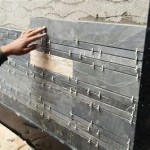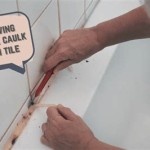Can You Lay Floor Tiles on Sand and Cement?
Laying floor tiles directly on sand and cement is not recommended for several reasons. While it may seem tempting to skip the traditional subfloor preparation, doing so can lead to various issues that may compromise the longevity and aesthetic appeal of your tiled floor. Understanding the specific challenges associated with this approach is crucial for making informed decisions regarding your flooring project.
Why Avoiding Direct Tile Installation on Sand and Cement Is Essential
Sand and cement, although readily available materials, present unique challenges in terms of stability, moisture control, and structural integrity when used as a base for floor tiles. Here's why it's best to avoid this practice:
1. Lack of Structural Stability
Sand and cement, by their nature, are loosely packed materials that lack the rigidity and stability required for supporting tiles. The sand's granular structure allows for movement and shifting, while cement alone doesn't offer sufficient strength to withstand the weight and pressure of foot traffic. This can lead to cracking, unevenness, and tile displacement over time.
2. Moisture Control Issues
Sand, being highly porous, readily absorbs moisture from the ground or nearby sources. Cement, while more resilient, can also absorb moisture to some extent. This moisture can seep into the grout between tiles and create a breeding ground for mold and mildew, compromising the health of your indoor environment. Additionally, moisture trapped beneath the tiles can cause them to detach or warp, leading to costly repairs.
3. Uneven Surfaces
Sand and cement alone create an uneven surface that can compromise the overall appearance and function of your tiled floor. The unevenness can affect the installation process, making it difficult to achieve a level, seamless look. Moreover, unevenness can cause stress points on the tiles, leading to chipping, cracking, and premature failure.
Alternative Solutions for a Stable and Durable Tile Floor
While laying tiles directly on sand and cement is not recommended, several alternative solutions can provide a solid, stable base for your flooring project. These options address the concerns mentioned above and ensure a durable and aesthetically pleasing tiled floor:
1. Concrete Slabs
A concrete slab provides a strong, stable, and relatively moisture-resistant base for tiles. The process involves pouring a layer of concrete over a compacted gravel base, allowing it to cure properly before proceeding with tile installation. This method offers better stability and moisture control than sand and cement and can withstand heavy foot traffic and furniture loads.
2. Plywood Subfloor
Installing a plywood subfloor over sand and cement creates a level and sturdy platform for tiles. The plywood sheets should be adequately supported by joists or beams to ensure stability. The joints between plywood sheets should be staggered to minimize movement, and the entire surface should be leveled before tile installation.
3. Backer Boards
Backer boards, specifically designed for tile installation, are an effective way to create a moisture-resistant and stable base. These boards are typically made of cement composite or waterproof gypsum board, providing a smooth, even surface for tile installation. They offer enhanced moisture resistance, making them suitable for areas prone to water exposure, such as bathrooms and kitchens.
Essential Considerations for a Successful Tile Installation
Regardless of the chosen subfloor solution, it's crucial to follow best practices for a successful tile installation. This includes:
1. Proper Subfloor Preparation
Ensure the subfloor is level and adequately supported to prevent movement or unevenness. Any imperfections should be addressed before proceeding with tile installation.
2. Moisture Barrier
Install a moisture barrier, such as a polyethylene sheet, over the subfloor to prevent moisture from reaching the tiles and compromising their integrity.
3. Thinset Mortar
Use a high-quality thinset mortar specifically designed for tile installation to create a strong bond between the tiles and the subfloor.
4. Grouting
Apply grout to fill the gaps between tiles and prevent moisture penetration, creating a clean and hygienic finish.
Conclusion
Laying floor tiles directly on sand and cement is not a recommended practice due to the inherent instability, moisture control issues, and unevenness associated with these materials. Opting for a stable subfloor solution, such as a concrete slab, plywood subfloor, or backer boards, ensures a durable, aesthetically pleasing, and long-lasting tiled floor. Remember to follow best practices for tile installation and subfloor preparation to achieve the desired results.

Cement Sand Ratio For Tiles Flooring What Is Of Used To Fix On Floor

Cement Sand Ratio For Tiles Flooring What Is Of Used To Fix On Floor
How To Lay Floor Tiles On Concrete Stonesuper
When Cementing Tile Why Do People Add Rows To The Cement Instead Of Just Leaving It Smooth Quora

Building Bedroom Floor With Sand Cement How To Install Ceramic Tiles Step By

Cement Sand Ratio For Tiles Flooring What Is Of Used To Fix On Floor

Sand And Cement Screeding My Tiling Ltd

Tiling Adhesives Or Sand Cement Mix Which One Is Better Building And Interiors

Materials Needed To Lay Tile Floor The Best Tools Rubi Blog Usa

How To Tile Grout Part 2 Screeding A Floor The Best Way Level With Sand And Cement
Related Posts








